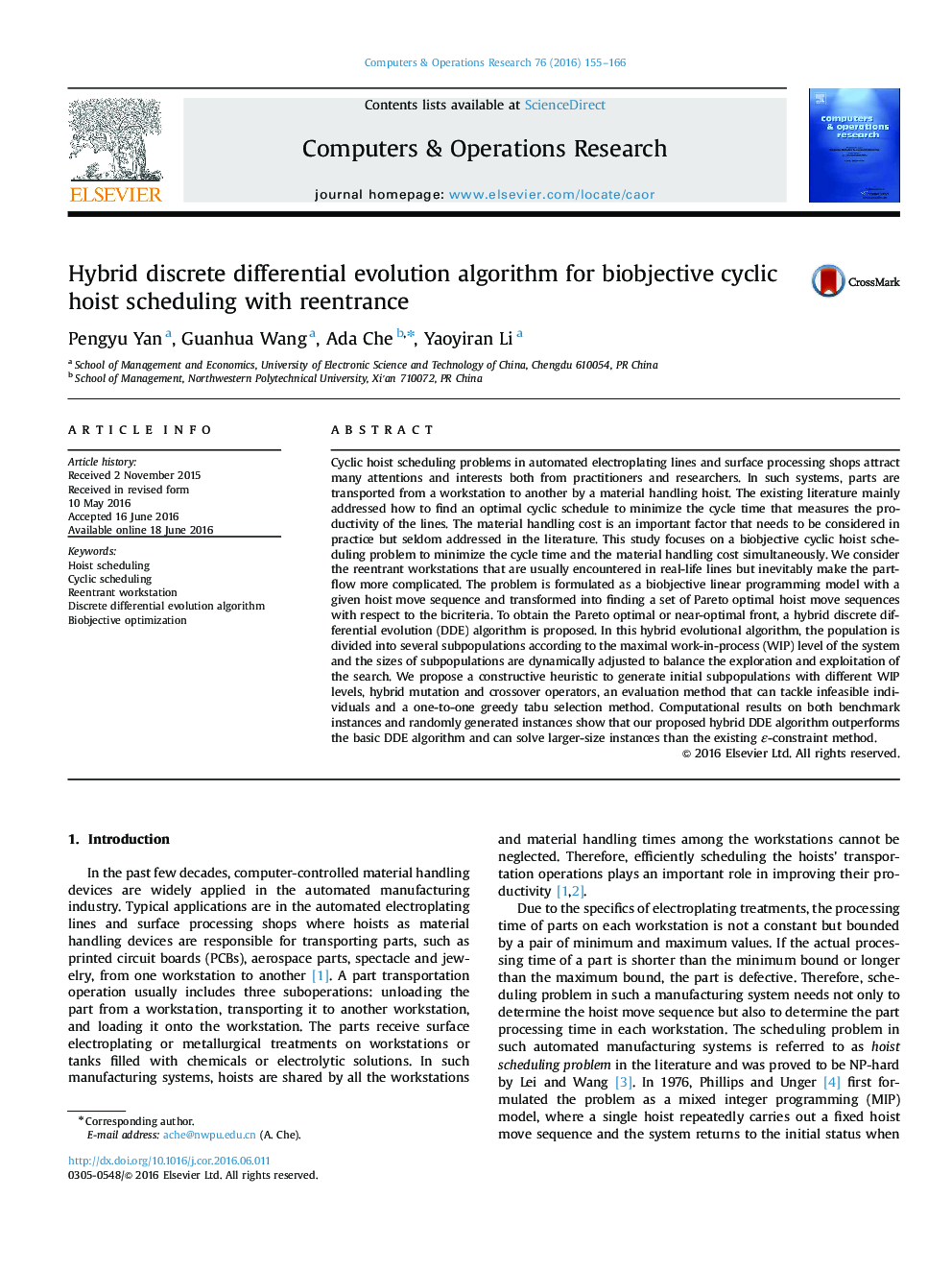| کد مقاله | کد نشریه | سال انتشار | مقاله انگلیسی | نسخه تمام متن |
|---|---|---|---|---|
| 474571 | 699061 | 2016 | 12 صفحه PDF | دانلود رایگان |
• We address biobjective cyclic hoist scheduling problem with reentrance.
• The objective is to minimize the cycle time and the material handling cost simultaneously.
• We propose a hybrid discrete differential evolution algorithm.
• Our algorithm outperforms the basic DDE algorithm and the ε-constraint method.
Cyclic hoist scheduling problems in automated electroplating lines and surface processing shops attract many attentions and interests both from practitioners and researchers. In such systems, parts are transported from a workstation to another by a material handling hoist. The existing literature mainly addressed how to find an optimal cyclic schedule to minimize the cycle time that measures the productivity of the lines. The material handling cost is an important factor that needs to be considered in practice but seldom addressed in the literature. This study focuses on a biobjective cyclic hoist scheduling problem to minimize the cycle time and the material handling cost simultaneously. We consider the reentrant workstations that are usually encountered in real-life lines but inevitably make the part-flow more complicated. The problem is formulated as a biobjective linear programming model with a given hoist move sequence and transformed into finding a set of Pareto optimal hoist move sequences with respect to the bicriteria. To obtain the Pareto optimal or near-optimal front, a hybrid discrete differential evolution (DDE) algorithm is proposed. In this hybrid evolutional algorithm, the population is divided into several subpopulations according to the maximal work-in-process (WIP) level of the system and the sizes of subpopulations are dynamically adjusted to balance the exploration and exploitation of the search. We propose a constructive heuristic to generate initial subpopulations with different WIP levels, hybrid mutation and crossover operators, an evaluation method that can tackle infeasible individuals and a one-to-one greedy tabu selection method. Computational results on both benchmark instances and randomly generated instances show that our proposed hybrid DDE algorithm outperforms the basic DDE algorithm and can solve larger-size instances than the existing ε-constraint method.
Journal: Computers & Operations Research - Volume 76, December 2016, Pages 155–166
